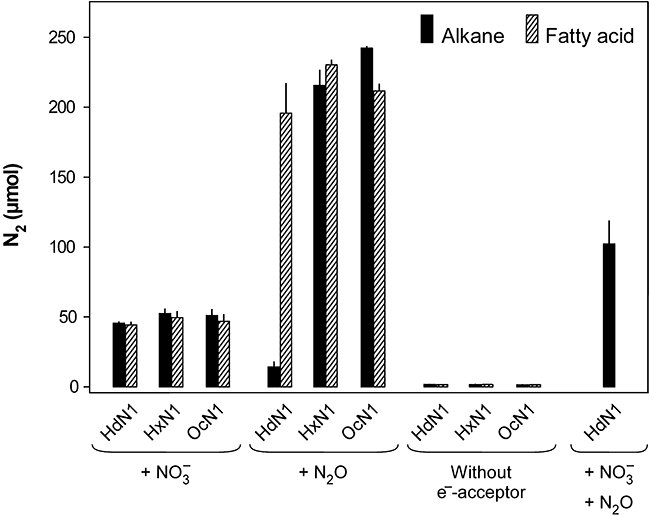Fig. 4.

N2 formed in anaerobic cultures of strains HdN1, HxN1 and OcN1 with alkanes (black bars) or fatty acids (striated bars) and either NO3− (100 µmol) or N2O (250 µmol). A control experiment with strain HdN1 for excluding N2O toxicity received both, NO3− and N2O. Here, more N2 was formed than with NO3− alone. This indicated that not only NO3− but also N2O was used in the anaerobic respiratory chain if alkane degradation was enabled by NO3−. Data show that strain HdN1 could not use N2O alone for alkane degradation, in contrast to the other strains. Culture volumes of 10 ml were incubated in 20 ml butyl-rubber sealed tubes. Strain HdN1 received 171 µmol of pure n-hexadecane, or 10 µmol of palmitate. Strain HxN1 received 38 µmol of n-hexane (in 100 µl of heptamethylnonane as carrier), or 30 µmol of caproate. Strain OcN1 received 31 µmol of n-octane (in 100 µl of heptamethylnonane), or 30 µmol of caproate. Tubes were incubated nearly horizontally while contact of the hydrocarbon phase with the stopper was avoided (Widdel, 2009) as far as possible. Gas samples were withdrawn 11 days after inoculation and analysed (triplicates) as indicated in Fig. 3.
